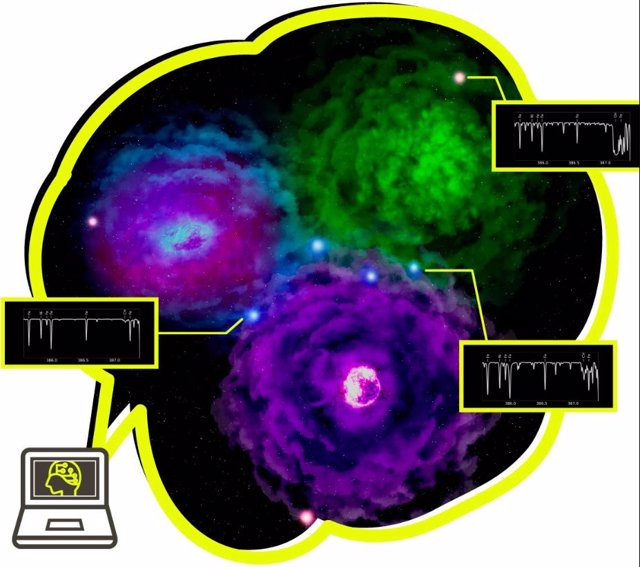March 23 () –
An Artificial Intelligence (AI) analysis of the chemical abundance of old stars reveals hints that the first stars in the Universe they were born in groups and not in isolation.
Now the international research team hopes to apply this method to new data from ongoing and planned observational studies to better understand the early days of the Universe.
After the Big Bang, the only elements in the Universe were hydrogen, helium, and lithium. Most of the other elements that make up the world we see around us were produced by nuclear reactions in stars. Some elements are formed by nuclear fusion in the core of a star, and others are formed in the explosive supernova death of a star. Supernovae also play an important role in dispersing the elements created by the stars, so they can join the next generation of stars, planets and possibly even living creatures.
The first generation of stars, the first to produce elements heavier than lithium, is of particular interest. But first-generation stars are difficult to study because none have ever been directly observed. It is thought that they have all exploded as supernovae. Instead, the researchers try to draw inferences about first-generation stars by studying the chemical signature that the first generation of supernovae imprinted on the next generation of stars. Based on their composition, extremely metal-poor stars are thought to be stars formed after the first round of supernovae. Extremely metal-poor stars are rare, but enough have now been found to analyze them as a group.
In this study, a team including members of the University of Tokyo/Kavli IPMU, the National Astronomical Observatory of Japan (NAOJ) and the University of Hertfordshire took a novel approach of using artificial intelligence to interpret elemental abundances in more than 450 extremely metal-poor stars observed by telescopes, including the Subaru Telescope. They found that 68% of observed extremely metal-poor stars have a chemical signature that is consistent with enrichment by multiple previous supernovae, reports the NAOJ.
For the ejecta from multiple previous supernovae to blend into a single star, the supernovae must have occurred very close together. This means that, in many cases, the first generation stars must have formed together in clusters rather than as isolated stars. This offers the first quantitative restriction based on observations of the multiplicity of the first stars.
The team now hopes to apply this method to Big Data from current and future observing programs, such as data expected from the Prime Focus Spectrograph on the Subaru Telescope.
These results are published in The AstrophysicalJournal.















